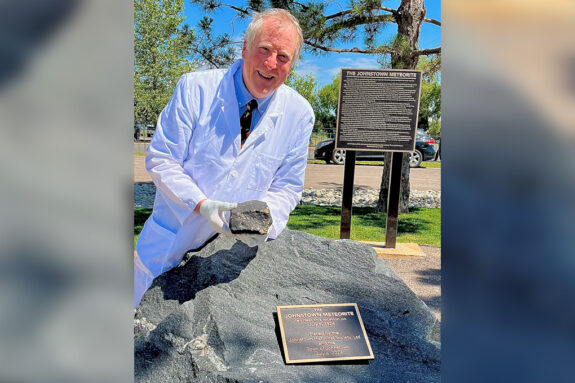3 Questions: New Faculty Interview with Gaia Stucky de Quay

Gaia Stucky de Quay takes samples of basalts to calculate waterfall retreat rates at the Dettifoss waterfall in Iceland. Image courtesy Gaia Stucky de Quay.
Gaia Stucky de Quay joined the Department of Earth, Atmospheric and Planetary Sciences (EAPS) as an assistant professor in January. Stucky de Quay studies planetary surfaces, examining the driving forces that create surface features such as rivers, lakes, and mountains. In addition to studying the Earth, she also looks at they form on Mars, and how these processes could help create ideal conditions for life to evolve. Here, she talks about the fundamental questions that she explores in her research, how they tie into the research mission of EAPS, and the team members she’s looking for to help her study them.
Q: What fundamental questions are you hoping to explore through your research?
A: The main question for me is the ancient Mars climate, because we had a planet that was basically like a sister to Earth. There is an ongoing debate between what we’re seeing and what’s physically possible: Climate scientists say it’s too cold on Mars, too far away from the Sun, and that there’s no way we can have massive oceans and stable lakes for millions of years; it’s just not physically possible. But then the geologists and the geomorphologists look at the surface, see all these rivers and lakes – so somehow it had to happen! The big question that I would like for us to address as a community of Martian scientists is what was this climate like? Was it cold and icy? Was it warm and wet? Was it constant throughout millions of years? Was it intermittent or more like a desert, like the Sahara? How is it possible that we have two disparate groups of data and models that struggle to agree? Being able to converge a bit more on these two views in the near future would be really exciting.
I’m also really interested in how climate itself changes landscapes, on Earth itself. One of the regions that I’m really interested in are volcanic islands because they’re made of the same material as Mars (a volcanic rock called basalt). If we can understand how volcanic islands change over time, we can better understand Mars surface evolution. In addition to this, these islands are kind of like a sandbox: what does a certain climate do to a piece of rock over X million years? If you put a certain amount of precipitation, how much do you erode? Then we can apply the answers back to Mars, so in a way I’m kind of stealing things from Earth to then apply it back on Mars.
Q: how do these questions align with research being done here at EAPS?
A: It’s at the nexus of Earth, planets, and climate, the central themes of EAPS. It’s related planets because, well, it’s our understanding of planetary evolution occurs. Not just Mars, but every terrestrial planet that we know of. It’s related to Earth as well because I’m investigating climate interactions on Earth, and we are exploring how climate impacts our landscapes. And then the life theme is where it splits into two alignments. My keen interest in life is the question of planetary habitability. I don’t just want to know how much water there was on Mars because it’s fun to find a volume on its own. Knowing how much water there was, and for how long, is a fundamental constraint for determining life could have formed on the Red Planet. If you’ve got a small lake that was there for one year, that’s probably not enough time to create life. But if you’ve got a giant ocean, that could be even warm, and was there for 100 million years, well, then we’ve definitely got conditions for life to develop.
And then going back to my volcanic islands, several communities live on these islands and they’re incredibly prone to natural hazards: volcanism, landsliding, and coastal erosion, among others. Thus, a better understanding of the hazards — how can we map them, how can we find the links between erosion and mass movements — and landscape evolution over time is important for people’s livelihoods too.
Q: What is your goal for a research program of your own here, and what sort of group are you looking to put together?
A: My idea is to have a group that mirrors my dual interest in these parallel worlds, and extracting links between different planets. This means not just having a student that only looks at Mars, or a postdoc that only wants to work on Earth, but hopefully nurturing a desire to transfer our knowledge from one location to another that has similar physics, but a completely different scenario. In essence, a planetary analog group where we interchange the concepts over different locations. I also value integrating different techniques, not just computational or theoretical work, but going into the field and collecting samples, obtaining real geological data, as well as using remote sensing or using satellite data to look at a whole continent and the topography of a continent, and of course analyses samples in the lab. Not every student will be interested in incorporating this whole suite of tools, but an openness to integrate different techniques to untangle the whole story is central in the geological sciences. I guess a kind of diverse, holistic approach to interplanetary research


